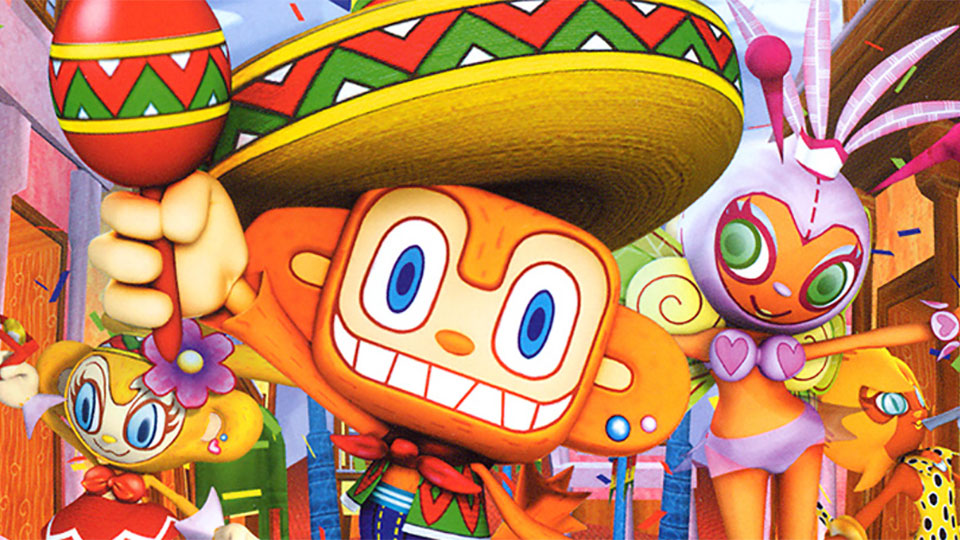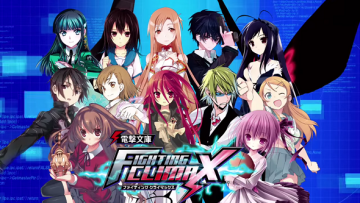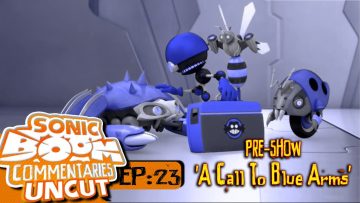
Samba de Amigo Developer Diary #2
Samba de Amigo is coming out in a few short weeks and that’s something to be very excited about. Very few people got to pay the original wither in Arcades or the Dreamcast port. Developers Gearbox Software were huge fans of the game and they were the ones who contacted Sega about doing a remake. Samba De Amigo is defiantly a departure from the norm for the company who up until now have been in the business of First Person Shoot-Em-Ups. In their latest developer diary Gearbox talk about the changes from the original game and how much work they’ve put into the remake.
Samba de Amigo developer diary #2If you read the last Samba de Amigo developer’s diary, you know how the idea to put the game on the Wii went from being just a gleam in Gearbox’s eye to development reality. What does it take to capture the fun of a game like Samba and transfer the magic to a new console and audience? In this diary, we’ll talk about how Gearbox and Sega worked together to bring Samba into the next generation!
A Fresh Look
Samba de Amigo for the Wii is much more than just a port of the Dreamcast original. After spending countless hours shaking maracas to the original Samba and the Japanese-only Ver. 2000 (a follow-up game that added several new features and songs), the team enjoyed some well-deserved arm resting and sat down to plan. “We built a giant wishlist of features we wanted to add based on the opinions of our team and original Samba players,” describes Tom Mustaine, Producer on the project. “We then worked with Sega to determine which features would be the best for the game and came up with a list that felt good.” It must have been an enormous list, because the amount of features that ended up in the game is impressive!
What’s New?
So, what features and updates did the team create for Samba? As more than just a port and even more than a hybrid of the earlier Samba releases, you can expect to see tons of new features along with recognizable Samba standbys.
First off, all of the art in the game has been re-visualized and updated from its Dreamcast source. This means smoother, prettier, and even more vibrant environments and characters! All of the original stages we re-built from the ground up, re-lit, and re-animated, so expect your favorite locations to be back and livelier than ever! The artists also remodeled all of the characters, who are now higher-poly and much better-looking. The entire game has received a graphical facelift for its new home on the Wii.
On the gameplay front, there’s a balanced mix of classic Samba and new additions. There are more than 40 songs in the game, of which more than half are brand new. All the game modes are back; Original, Hustle, and Volleyball are all available. We’ve even added a new career mode where players progress through and unlock new game elements and a training mode where new players and veterans alike can learn everything from the basics of playing Samba to advanced techniques. There are three completely new stages, two new characters for you to meet, and two new minigames to play!
We’re very proud to be the first game officially offering downloadable content on the Wii – rhythm games have become increasingly popular and we know how important it is that new content is available to players. It’s exciting to be able to offer the Wii audience new songs to keep the Samba experience fresh and fun. You’ll also notice that even though Samba is a third-party title, we were allowed to use Nintendo’s Miis in the game. Most third-party games aren’t able to, but Samba fits the Wii so perfectly that Nintendo gave us the go ahead! The game will also take advantage of the Friend Roster and Leaderboards, using everything the console has to offer.
Oh, and not to mention the brand new Wii controls – but I’ll save that for its own article!
Fun Factor
Yes, it’s an impressive list of features and updates, but is the game fun? Do all those features come together the right way to deliver the Samba experience of a vibrant, eccentric, and entertaining rhythm game? These thoughts were always on the team’s mind as they set to work creating the game. “We had people constantly playing the game from the moment it was up and running on the Wii,” Tom Mustaine emphasizes heavily how important playtesting was to the process of creating the game. “To gauge the opinions about the Wii version, we created playtesting sessions that included folks who had played the original games only a few times alongside hardcore Samba fans that had mastered the original. Using the data from these different types of players, we were able to make sure the game felt rock solid for the new player and hardcore Samba fan alike.”
The teams at Sega of America, Europe, and Japan were also crucial to ensuring the game was perfect. SEGA of America and SEGA Europe helped ensure that the game would be fresh, fun, and accessible to new players, and that the music selection was enjoyable and a good fit for the game. The Japanese team included many individuals who had worked on the Dreamcast games from Sonic Team who were absolutely essential in ensuring that the Wii game lived up to the original’s standard. Everyone involved really cared about bringing the game up-to-date and keeping it fun, and their efforts really show.
Controls?
In the next dev diary, we’ll discuss one of our biggest concerns (and probably yours, too) during development: the controls! Learn how the dev team rose to the challenge of translating maracas to Wii Remotes, the challenges of motion-based control, and how success was finally met!
Allison Berryman
Community Manager
Gearbox Software
This post was originally written by the author for TSSZ News.



![[ID: aoP98_uXi_Q] Youtube Automatic](https://lastminutecontinue.com/wp-content/uploads/id-aop98uxiq-youtube-automatic-360x203.jpg)
![[ID: 4dvM8L2QvKE] Youtube Automatic](https://lastminutecontinue.com/wp-content/uploads/id-4dvm8l2qvke-youtube-automatic-360x203.jpg)

